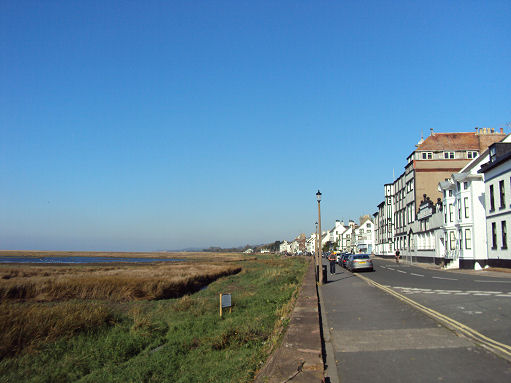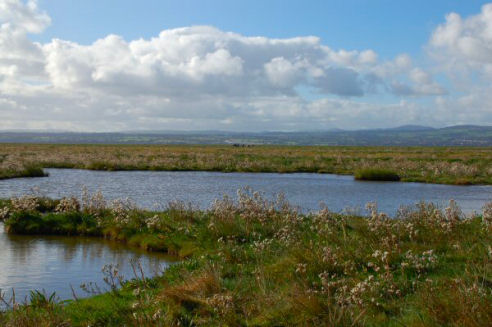Parkgate
OS Grid ref:- SJ277782
The village of Parkgate, on the Wirral Peninsula lies on the beautiful estuary of the River Dee and boasts bird watching, regionally famous homemade ice cream, sunsets and fresh local seafood, including shrimps and cockles. The village has stunning views across expansive marshland and beyond to the hills of Wales.

The marshlands of Parkgate are currently managed by The RSPB as part of the Dee Estuary Nature Reserve. The Dee Estuary is one of the largest and most important wetland sites in the world.
Parkgate Marsh

Parkgate gained prominence in the eighteenth century as a port for Ireland due to the decline of Chester's importance as a port caused by the silting of the River Dee. It was to become a fashionable sea-bathing resort.
The sandstone church of St. Thomas was built in 1843 as a Congregationalist Chapel. Mostyn House School, a striking black and white building, was opened in Parkgate in 1855. From 1862 until it closed in 2010, it was run by the Grenfell family, most recently as a co-educational day school. Sir Wilfred Grenfell (1865–1940), famous medical missionary to Newfoundland and Labrador, one of Parkgate's most famous sons, was a pupil at the school
A walk along the Dee Estuary from Parkgate
Distance- 5 miles
*Commencing at the Old Baths car park at Gayton Sands Nature Reserve walk along the shoreline with the marsh on your left and the golf course on your right. At the break in the path just after passing a a beech hedge, join the road to join the Wirral Way.
*On arriving at a road which cuts through the Wirral Way, cross over to a car park and continue along the route towards Neston. Pass one footpath sign indicating Neston Town Centre to the left and at the next footpath post leave the Wirral Way at a kissing gate, the signpost marked Old Quay.
*Follow the line of the hedge line and at a galvanised kissing gate turn left to join a path which leads towards the shore. Turn right and follow a path that in places crosses streams by way of boarded footbridges. Join Manorial Road South at the end of the footpath.
* At the end of the cul-de-sac a narrow footpath leads to a further street, follow this to a T-junction. Turn left and an access track leads to the main road. turn left again to rejoin the shore by the Old Quay pub.
*Turn right along the front passing Mostyn House School. Continue on the pavement and where the road swings right, keep ahead past the Boat House pub to return to the car park.
Nearby places of interest
Brotherton Park, a nature reserve, is a one of the finest examples of ancient woodland on the Wirral and once formed part of the Royal forest of Wirral dating back to the end of the last ice age. Other habitats on the reserve include wildflower meadows, reed swamps and historic parkland. Brotherton Park and Dibbinsdale comprises of 47 hectares of semi-natural countryside along the valley of the River Dibbin.
Eastham Country Park is situated on the banks of the River Mersey, the park covers a hundred acres and contains some of the finest mature trees to be found on the Wirral. The park offers excellent views across the estuary and the cliffs at provide superb sites for viewing the flocks of waders and ducks on the estuary. Much of the Estuary is now designated a Site of Special Scientific Interest.
